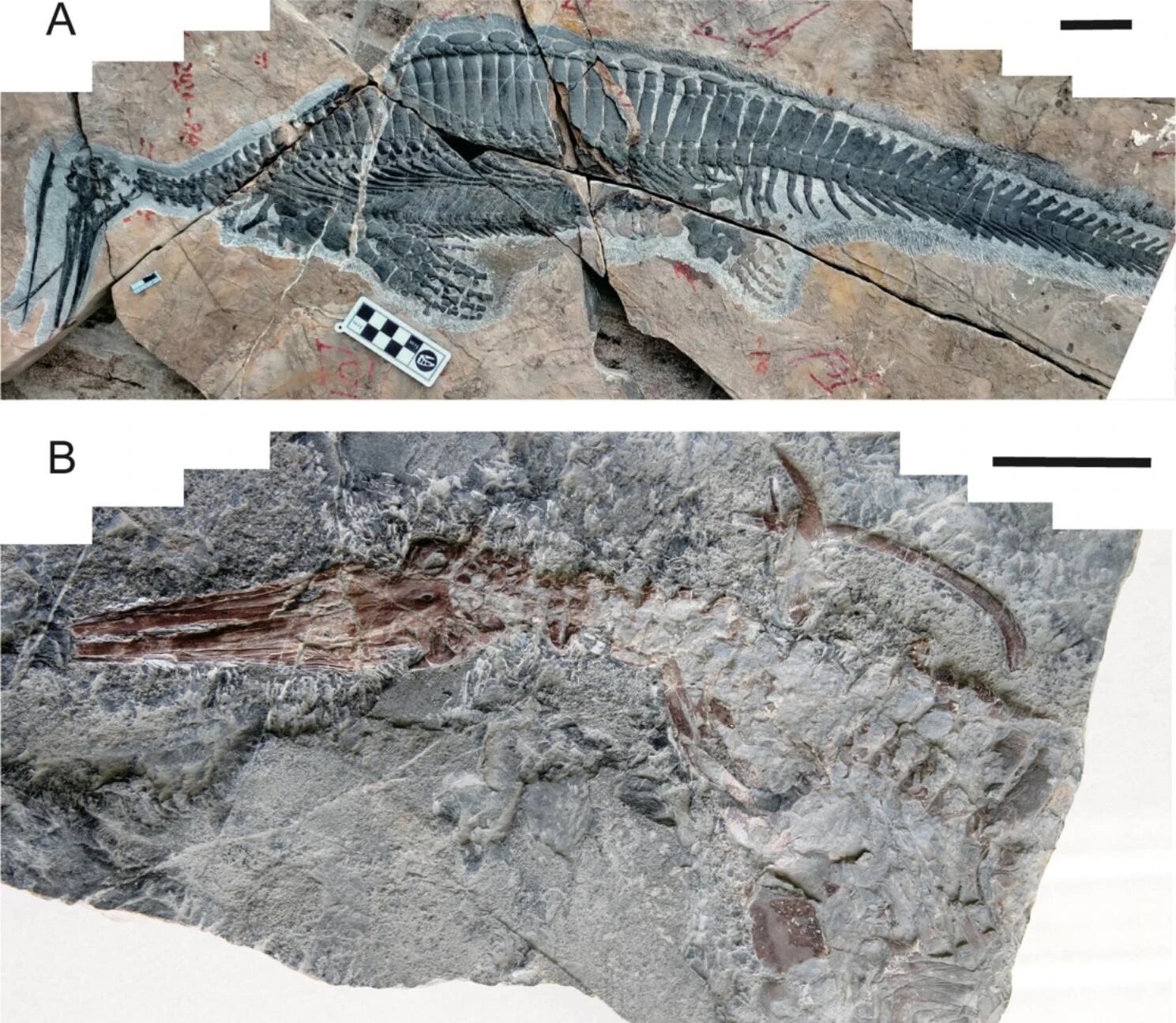A fascinating discovery has been made by a team of paleontologists and geoscientists from China University of Geosciences and Hubei Geological Bureau, along with a colleague from the University of Bristol. They have found compelling evidence that the ancient marine reptile Hupehsuchus nanchangensis was actually a filter feeder. In their recent publication in the journal BMC Ecology and Evolution, the researchers explain how they compared newly discovered Hupehsuchus skulls to those of modern baleen whales and other creatures, and what they uncovered through this analysis.
Approximately 252 million years ago, a series of volcanic eruptions released an immense amount of material into the atmosphere, resulting in the extinction of around 95% of all marine species. This catastrophic event, known as the “great Dying,” caused significant changes in the surviving organisms. Over millions of years, one particular creature evolved into Hupehsuchus.
First discovered in 1972 in Hubie Province, China, Hupehsuchus has remained a mysterious creature. Unlike its contemporaries, it lacked teeth and had a slender snout.
These unique characteristics made it highly unlikely for the creature to survive by hunting and consuming smaller prey, leading researchers to speculate that it may have been a filter feeder, similar to modern baleen whales. However, concrete evidence was lacking until now. In this groundbreaking study, the team obtained and examined two recently discovered Hupehsuchus fossil specimens, one of which was a complete skeleton and the other consisting of a head, neck, and clavicle. These fossils provided a top-down view of the skull, a perspective previously unavailable with other Hupehsuchus fossils.
Although neither fossil exhibited any signs of baleen or similar structures, this was not surprising, as baleen in modern whales is composed of soft tissue that does not fossilize well, if at all.
Undeterred, the researchers pursued alternative avenues of evidence. They compared the new fossils with skulls from 130 modern aquatic animals, including both filter feeders and non-filter feeders. Through this comparative analysis, they discovered that the closest resemblance was with modern baleen whales, strongly suggesting that Hupehsuchus was indeed a filter feeder.








